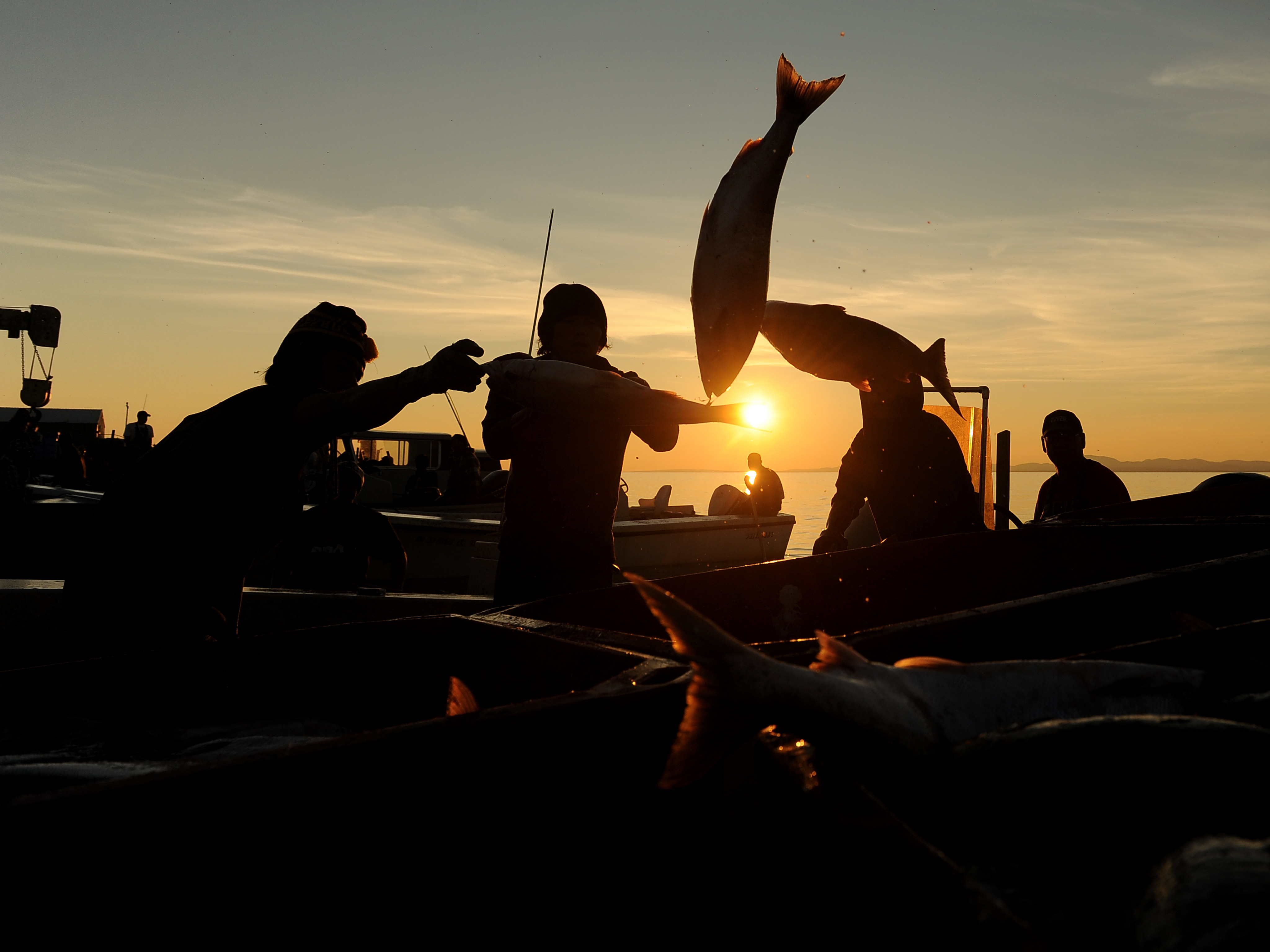As traditional Alaska Native marine diets decline, vitamin D deficiency rises

Reduced consumption of traditional marine foods over the past decades has triggered a rise in vitamin D deficiencies, and the result has been an increase in the incidence of rickets for Alaska Native children, medical research shows.
Results of a recently published study linking the decades-long transition away from fish and other marine foods and the problems with vitamin D deficiency were presented at a conference in Anchorage last month.
Wild salmon, a mainstay of the traditional indigenous Alaska diet, is particularly rich in vitamin D, Dr. Rosalyn Singleton of the Alaska Native Tribal Health Consortium and one of the authors, said in the presentation. Other oily fish also contain vitamin D, as do such traditional foods as beluga oil and seal oil, she said.
The relationship between a traditional marine diet and vitamin D levels is shown in chemistry, using blood serum samples from women 20 to 29 years old from Yukon-Kuskokwim region of western Alaska. Older samples, dating from the 1960s, from the federal-tribal Alaska Area Specimen Bank were compared to modern samples.
Isotope analysis of the samples found a decline since the 1960s in the chemical signature — a heavy form of nitrogen — associated with fish and marine foods. The decline correlates neatly with a rise in vitamin D deficiency among the women of childbearing age, according to results of the study, published earlier this year and presented by Singleton at the conference.
In 1960s, 100 percent of Yukon-Kuskokwim women in that age group had sufficient vitamin D, but in the 2010s, only 53 percent of those women had sufficient vitamin D, according to the study.
A related study by Singleton and her colleagues found that from 2001 to 2010, Alaska Native children were hospitalized for rickets — a disease that results from severe vitamin D deficiency — at nearly twice the general U.S. rate. Rickets prevalence increased with latitude, they found.
Vitamin D deficiencies have long been a concern in high latitudes because sunlight — which stimulates its production in the body — is scarce in winter months.
Also correlated with maternal vitamin D deficiency was a high rate of dental cavities for young children, additional research from the Yukon-Kuskowkwim region found. Children younger than 36 months of age who had low vitamin D levels at birth had, on average, twice as many decayed, missing or filled teeth as did those whose vitamin D levels, according to the study, which Singleton summarized at the conference.
Alaska Natives already have some of the nation’s highest rates for early childhood cavities, she pointed out. In the Yukon-Kuskokwim region, 73 percent of children had to have full mouth dental reconstruction by the time they were 6 years old, she said at the conference.
“This is a statistic that makes me very sad,” she said.
One Alaska state legislator familiar with the Yukon-Kuskoskwim vitamin D studies said he had hoped to get a broader statewide assessment.
Rep. Paul Seaton, a Republican from Homer and a longtime advocate for vitamin D screening and research, introduced a bill in 2013 that would have tracked levels of the vitamin in newborns around the state. The measure would have set up a voluntary system for testing newborns’ cord blood, and results would have provided the state with information about a health issue problem that is known to be accentuated in the far north, he said. The bill did not pass the legislature, and without the data — or funding or a mandate for research — the Alaska Department of Health and Social Services declined to carry out any study, Seaton said.
The department’s epidemiology section recently synthesized some Alaska research done by other organizations, including the Alaska Native Tribal Health Consortium.
Season said important research has been done elsewhere in the far north, and results should be heeded across borders.
“The other Arctic nations all have some form of national health coverage, and they can so some research,” he said. “We don’t have that data, which is too bad.”
He cited a study about the link between diet and vitamin D levels among Nenets and Komi people in Arctic Russia. The study, published in 2014 in the International Journal of Circumpolar Health, compared vitamin D levels for those Nenets and Komi people who were pursuing a traditional reindeer-herding lifestyle with counterparts in urban areas. The study found that a traditional diet was an important factor in maintaining sufficient vitamin D levels and that “inhabitation of high latitude by itself does not negatively influence the vitamin D status of a population.”
Seaton said research in Arctic nations suggests that vitamin D could be helpful in addressing a variety of Alaska problems. He cited a new study from Sweden that showed how vitamin D supplements reduced the need for opioids to control pain of patients with incurable cancer. The study, published in August in the journal PLOS ONE, holds lessons for Alaska, which is struggling with an opioid addiction problem, Seaton said.
“I don’t think we can ignore the data that has come up,” he said.